CLEAN MASTERING MEAT COOKING WRAPPED WITH ALUMINUM FOIL
🍳
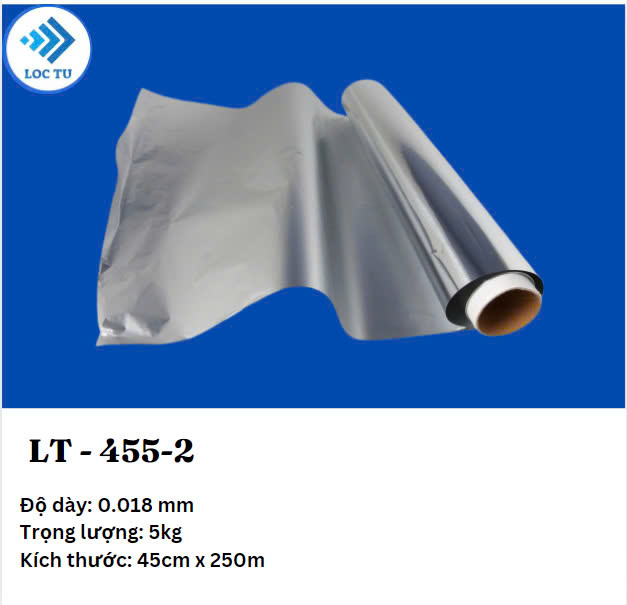
"Achieving steakhouse-quality sear shouldn't require a hazmat suit for your kitchen."
1. The Science Behind the Method: How It Works
1.1. Pan as the Heat Source
🔥 Consistent Heat: A pan heated on a stovetop provides direct, consistent heat to its base.♨️ Even Distribution: A good pan (especially cast iron or a multi-ply stainless steel) distributes this heat evenly across its surface.🌡️ Temperature Control: You control the heat precisely using your stove's burner.
"The pan provides the stable, controllable heat."
1.2. Aluminum Foil as the Cooking Surface
🛡️ Heat Transfer: Aluminum foil is an excellent conductor of heat. It rapidly absorbs heat from the hot pan and transfers it directly to the meat placed on top of it.🚫 Non-Stick (Sort Of): While not truly non-stick like a coated pan, the relatively smooth surface of aluminum foil, especially when lightly oiled, reduces sticking compared to meat directly on a metal or cast-iron surface. Meat releases more easily.💧 Moisture Retention (Minor): The close contact with the foil can trap a small amount of steam released from the meat initially, helping the surface stay slightly moist before searing begins.🧼 Grease Containment: This is a major benefit. As fat renders from the meat, it collects on the aluminum foil surface, preventing it from dripping onto the hot pan base and causing smoke.
"Foil is the interface. It transfers heat. It manages grease."
Term-Definition Pair: Searing: A cooking technique where the surface of food is cooked at high temperature until a browned crust forms. This method achieves searing results.
2. Advantages: Why Choose This Technique?
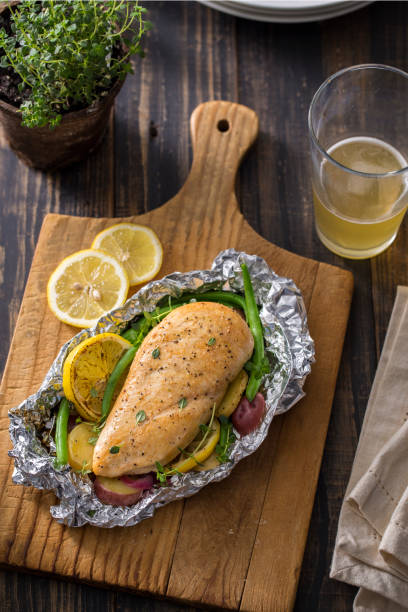
💨 Reduced Smoke: By containing rendered fat on the foil surface, less grease drips onto the hot pan or heating element. This significantly reduces smoke compared to pan-frying directly.🧼 Easy Cleanup: The foil acts as a disposable liner. All the grease, rendered fat, and cooked-on bits adhere to the foil. Simply wait for it to cool, then lift and discard the foil. The pan requires minimal cleaning.📍 Convenience: It uses basic kitchen equipment (a pan, a stove). No special grill or oven setup needed. Quick to start, quick to finish.🥩 Good Sear: You can still achieve a satisfying brown crust (sear) on the meat using this method, similar to grilling or pan-frying directly.⏰ Speed: Stovetop cooking is fast. This method cooks meat relatively quickly compared to baking or roasting.💲 Cost-Effective: No need for expensive grills or specialized nướng tools. Just a pan and aluminum foil.🏡 Indoor Friendly: Perfect for cooking meat indoors anytime, anywhere, without major smoke issues.
"Less smoke, easy cleanup, great results. It's a winning combination."
3. Choosing the Right Gear: Pan, Foil, and Meat
3.1. The Pan and the Foil
🍳 Pan Choice: A heavy-bottomed pan works best. Cast iron pans are excellent. They retain heat very well. Stainless steel pans are also good. A pan with a flat base is ideal.🛡️ Foil Choice: Useheavy-duty aluminum foil . It is thicker and more durable. It resists tearing and puncturing better. It holds up well to the heat and weight of the meat. Standard foil can be used. But you might need to double it up for strength.📏 Foil Size: Cut a piece of foil large enough. It must cover the entire cooking surface of the pan. It should extend up the sides by an inch or two.
3.2. Choosing and Preparing the Meat
🥩 Meat Types: This method works well for cuts that cook relatively quickly. Steaks (beef, pork). Pork chops. Chicken thighs (boneless, skinless). Chicken breasts. Sliced meats for stir-fry (cooked in batches). Burgers.🔪 Thickness: Aim for uniform thickness. About 1-2 cm (½ - ¾ inch) is ideal for quick searing. Thicker cuts can be finished in the oven if needed.🧼 Preparation: Pat meatvery dry with paper towels. This is critical for a good sear. Season generously with salt, pepper, or your favorite rub/marinade.
"Heavy-duty foil is your friend. Dry meat sears best."
4. Setting Up: Wrapping the Pan
4.1. Steps to Wrap the Pan
🧼 Clean Pan: Start with a clean, dry pan.📏 Position Foil: Place the cut piece of aluminum foil over the pan. Center it.🙌 Shape Foil: Gently press the foil down into the contours of the pan. Make it fit snugly against the bottom and sides. Use your hands to smooth it out.🔗 Secure Edges: Fold the excess foil hanging over the sides. Fold it up and over the rim of the pan. Crimp it slightly to secure it. This holds the foil in place. It also creates a small barrier to help contain splatter.
"The foil should be smooth on the bottom. It needs to touch the pan evenly."
(Visualize a pan. It has been perfectly lined with aluminum foil. The foil covers the bottom and extends up the sides).
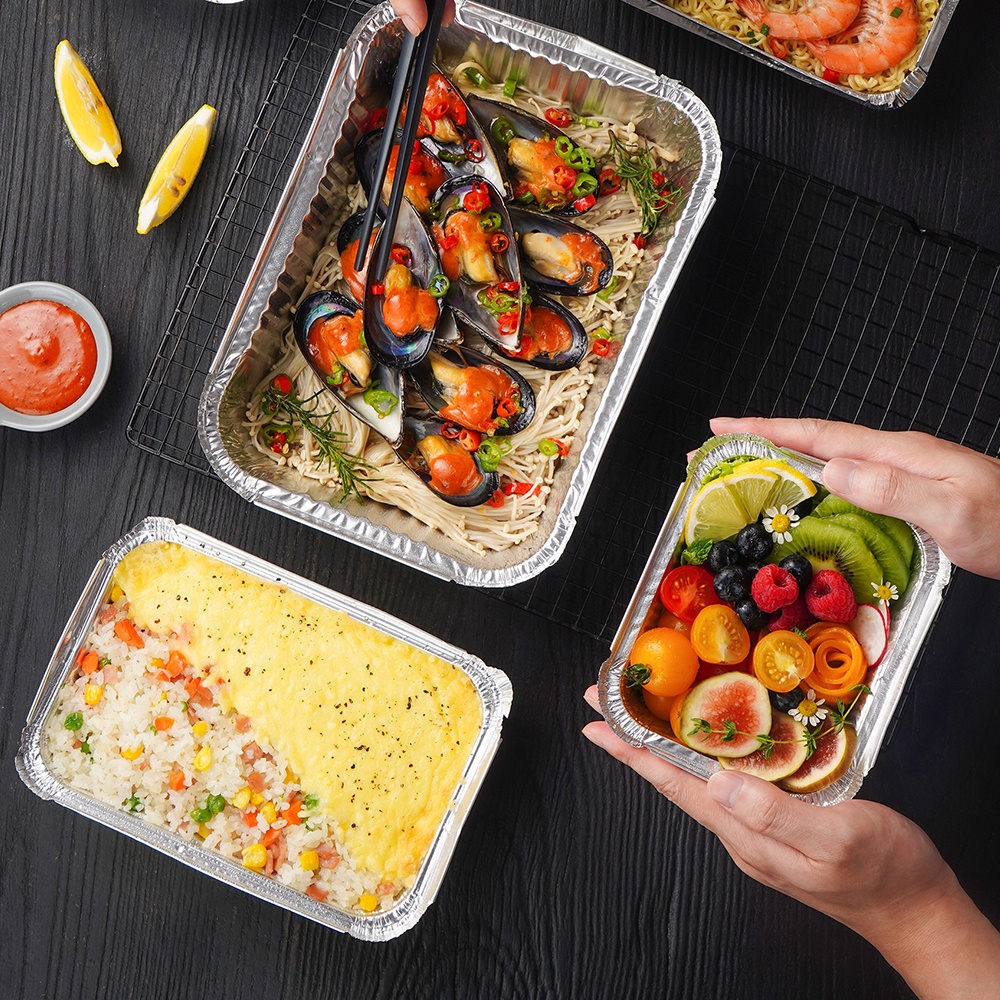
5. Cooking Process: Stovetop Searing
5.1. Steps for Cooking
🔥 Preheat Pan: Place the foil-wrapped pan on your stovetop burner. Turn the heat to medium-high. Preheat for 3-5 minutes. The foil surface should be hot. Test by flicking a few drops of water. They should sizzle and evaporate quickly.✨ Add Oil (Optional but Recommended): Add asmall amount of oil (a teaspoon or two) to the hot foil surface. Swirl it around. Use an oil with a high smoke point (canola, grapeseed).🥩 Add Meat: Carefully place the seasoned, dry meat onto the hot, oiled foil surface. Don't overcrowd the pan. Leave space between pieces.👂 Listen & Observe: You should hear sizzling immediately. Watch the edges of the meat. They will start to turn opaque.⏱️ Sear First Side: Let the meat sear undisturbed for the recommended time. This varies by thickness and heat level. Don't try to move it too soon. It will release when it's ready.🔄 Flip Meat: Use tongs. Flip the meat over. Sear the second side for the recommended time.🔪 Check Doneness: Use a meat thermometer or cut into a piece. (See Sec 6 for details).🍽️ Rest Meat: Remove cooked meat from the foil. Place it on a cutting board or plate. Tent loosely with foil. Let it rest for 5-10 minutes. This helps juices redistribute. It makes meat more tender.
"Heat the pan hot. Don't overcrowd. Let it sear undisturbed."
6. Timing and Doneness: Achieving Perfect Results
6.1. Estimated Cooking Times (Approximate)
6.2. Checking for Doneness
🔥 Visual Check: Meat surface should be nicely browned (sear). Juices may start to run clear for chicken/pork.🌡️ Temperature (Most Reliable): Use a meat thermometer. Insert into the thickest part. Avoid bone. Target temperatures:Beef Steak (Med-Rare): 57°C (135°F) Pork Chops: 63°C (145°F) Chicken (Breast/Thigh/Burger): 74°C (165°F)
🔪 Cut and Check: For quick checks, cut into the thickest piece. Ensure no raw areas or red/pinkness (except for rare/medium-rare beef).
"Cook to the correct internal temperature for safety and quality."
Term-Definition Pair: Internal Temperature: The temperature at the center or thickest part of food. It indicates how thoroughly food is cooked.
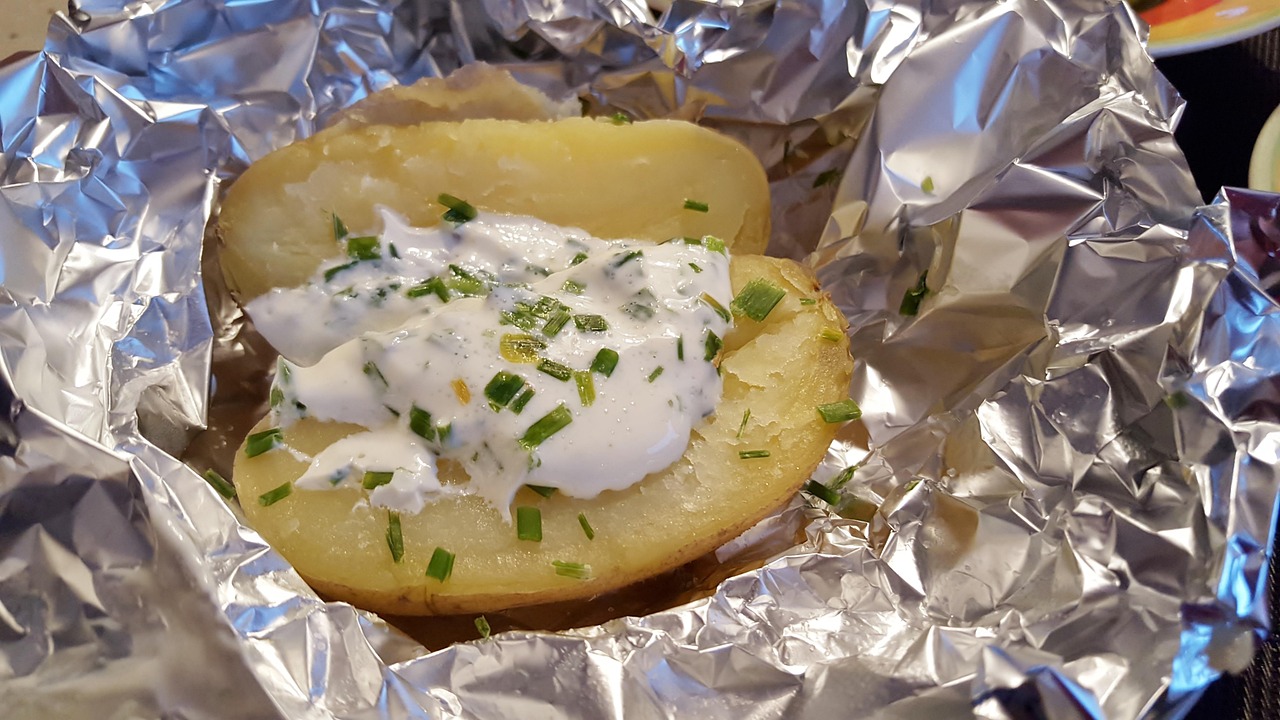
7. Troubleshooting Common Issues
💨 Too Much Smoke: Cause: Heat too high, or overcrowding, or adding too much oil.Solution: Reduce heat slightly. Cook in batches. Use less oil. Replace soiled foil if needed.
🥩 Meat is Sticking: Cause: Not enough oil on foil. Meat was not patted dry. Heat was not high enough initially.Solution: Ensure meat is dry. Use a bit more oil. Preheat pan properly.
✨ Not Getting a Good Sear: Cause: Heat too low. Pan not preheated enough. Overcrowding pan. Meat not dry.Solution: Increase heat. Preheat longer. Cook in smaller batches. Pat meatvery dry.
🔥 Foil is Burning/Tearing: Cause: Heat too high (unlikely with proper heat control). Using standard foil when heavy-duty is needed. Meat has sharp bones poking.Solution: Reduce heat. Use heavy-duty foil. Be careful with bony pieces.
"Identify the cause. Adjust your technique. Achieve success."
8. Safety Considerations for Stovetop Cooking with Foil
8.1. General Safety
🔥 Stovetop Safety: Never leave cooking unattended. Keep flammable materials away from the burner.🧤 Use Tongs/Mitts: Pan handle will be hot. Use oven mitts or a handle cover. Use tongs to handle meat.💨 Ventilation: Ensure good ventilation (turn on vent hood, open window) even though smoke is reduced.
8.2. Aluminum Foil Specific Safety
🚫⚡ NO MICROWAVES: This technique is for stovetop ONLY.Never put a pan with aluminum foil, or just aluminum foil, into a microwave oven. This causes arcing and damage.⚠️ Avoid Overheating Pan: Using excessively high heat for prolonged periods could potentially damage the pan or the foil, though less likely with standard cooking temperatures. Stick to medium-high heat.🧼 Handle Used Foil Carefully: Used foil will contain hot grease. Let it cool before handling and discarding.
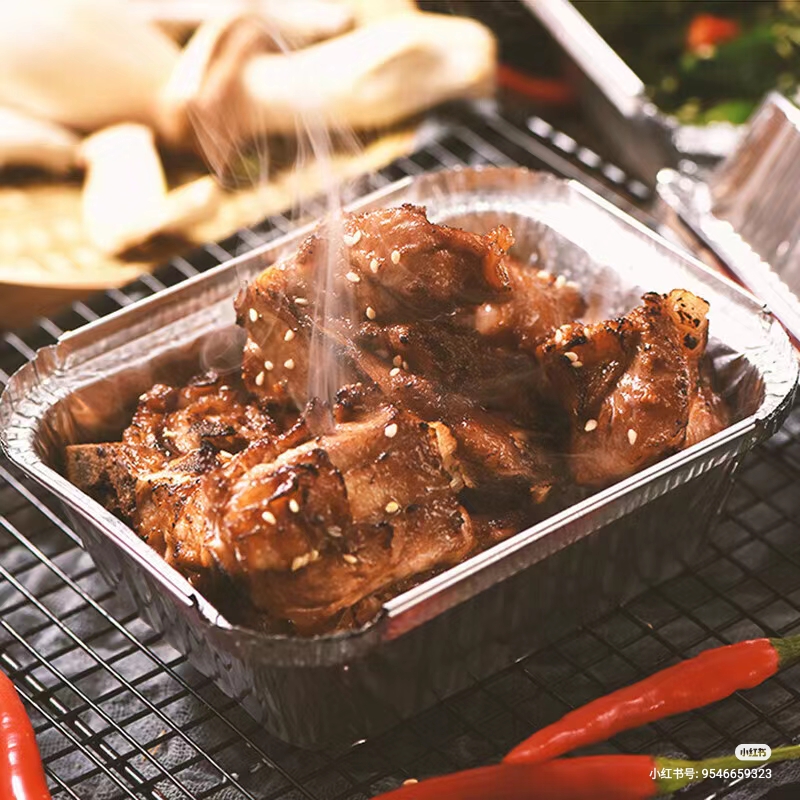
"Safety first. Enjoy delicious results."
9. Beyond Meat: What Else Can You Cook?
🍤 Seafood: Shrimp, scallops, fish fillets. Cook very quickly. Ensure fish skin doesn't stick (use enough oil).🥦 Vegetables: Sliced bell peppers, onions, zucchini, mushrooms. Cook until tender and slightly browned.🥟 Dumplings/Potstickers: Cook frozen or fresh dumplings. Achieve a crispy bottom.
"Your foil-wrapped pan is a multi-purpose cooking surface."
10. Cleanup: The Biggest Win
🧼 Foil Catches Everything: Rendered fat. Cooked-on bits. Marinade residue. It's all on the foil liner.🚮 Easy Disposal: Once cooled, carefully lift the foil from the pan. Crumple it up (contain the grease). Discard in the trash.✨ Minimal Pan Mess: The pan itself has not been in direct contact with the meat or grease. It will only have residual heat or maybe some light condensation marks. A quick wash is usually all that's needed.
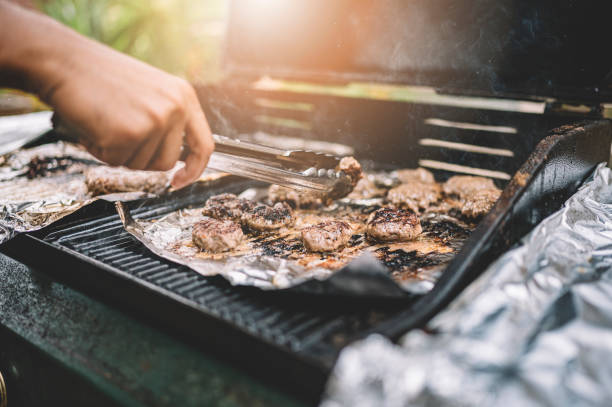
"Cleanup is the reward. For choosing this smart method."
11. FAQ: Your Questions Answered
11.1. Technique Details
11.2. Safety & Results
Indentation: This technique offers control for achieving desired results.
CONCLUSION: Pan Wrapped in Foil - Your New Stovetop Secret
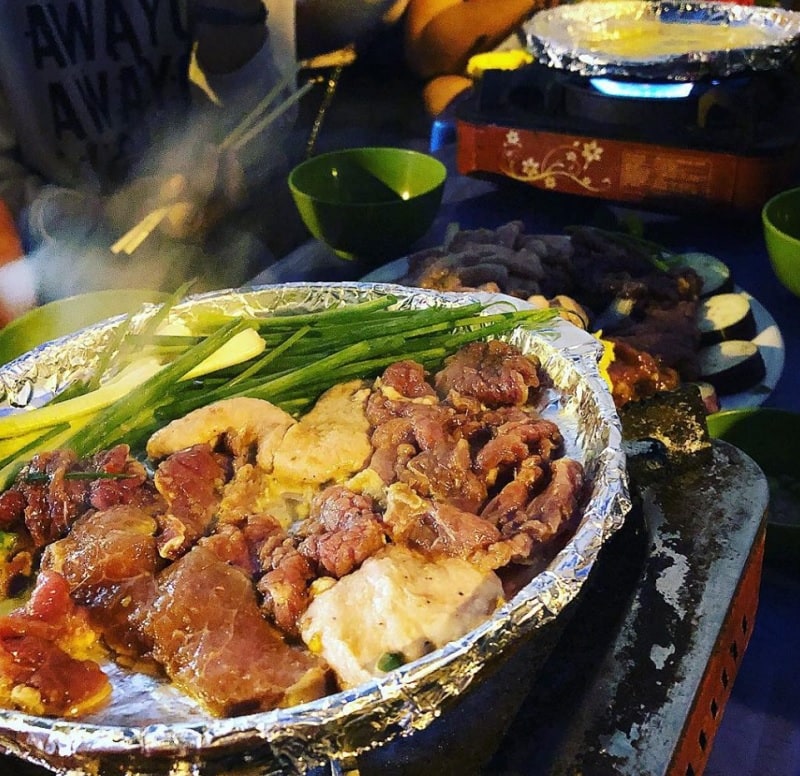
Loc Tu: Pioneering Excellence in Premium Aluminum Packaging Solutions
Why Choose Loc Tu:
✅ Assured Quality & Safety: Crafted from premium, food-grade aluminum, free from harmful impurities, meeting international safety benchmarks.
🔥 Optimal Thermal Properties: Ensures even cooking and excellent heat retention, preserving food temperature and taste effectively.
💪 Durable & Convenient Design: Engineered to resist leaks and dents, providing reliable performance for baking, storage, and transport.
🔄 Versatile Solutions: Our extensive range caters to various applications – from baking and steaming to storing fresh food and takeaway meals.
🌱 Eco-Conscious Packaging: Made from 100% recyclable aluminum, supporting sustainability and reducing plastic waste.
🎯 Brand Enhancement: Optional custom printing available to personalize products and boost your brand visibility.
🚚 Reliable Supply & Delivery: Capable of handling large orders with dependable, on-schedule nationwide shipping.
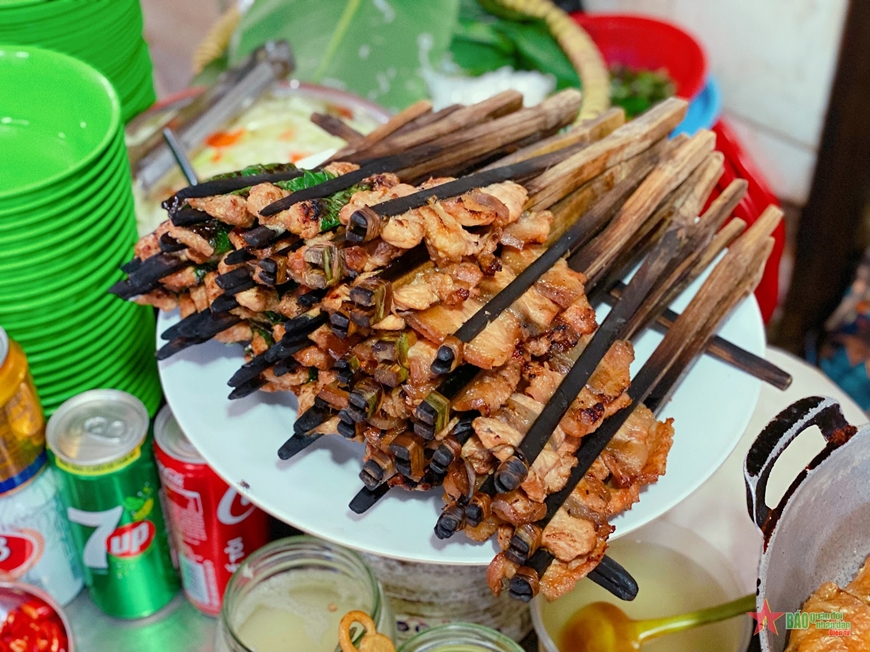
Your Trusted Partner in Food Packaging 📞
📌 LOC TU MANUFACTURING & TRADING CO., LTD
📌 Website: ALUMINUMFOILVN
📌 HOTLINE/ZALO: +84.969.787.309
📌 Facebook: Khay nhom thuc pham
📌 Youtube: Khay nhom thuc pham Loc Tu
📌 Tik Tok: Khay nhom Loc Tu
📌 Shopee: Khay nhom thuc pham Loc Tu
📌 Telegram: Khay Nhom Thuc Pham Loc Tu
📌 Whatsapp: +84.969.787.309
📌 Branch 1 (Hanoi): No. 1 Pham Tu, Beasky Building, Dai Kim Ward, Hoang Mai District, Hanoi
📌 Branch 2 (Binh Duong): No. 68, DX 051 Street, Group 17, Quarter 4, Phu My Ward, Thu Dau Mot City, Binh Duong Province
📞 Contact us today for expert consultation and the best pricing on premium aluminum trays, foil, and food packaging solutions! 🚀
LOC TU PRODUCTION AND TRADING COMPANY LIMITED
Branch 1 (Binh Duong): No. 68, DX 051 Street, Group 17, Quarter 4, Phu My Ward, Thu Dau Mot City.
Branch 2 (Hanoi): No. 1 Pham Tu, Beasky Building, Dai Kim Ward, Hoang Mai District.
Hotline/Zalo: +84.969787309
Website: Khaynhomthucpham.com
Email: [email protected]